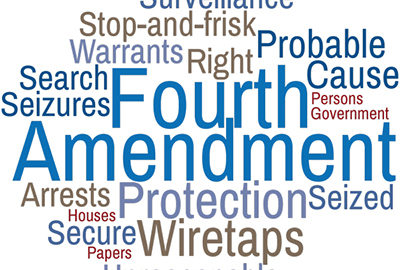Torres v. Madrid
No. 19-292
Supreme Court
Decided March 25, 2021
Issue:
Whether A Person Is Seized When Police Shoot At Her But She Escapes By Driving Away?
Whether 1) defendant Torres’ “continued flight after being shot by police” negates a Fourth Amendment excessive force-claim where police shot into defendant’s vehicle from a distance, striking her twice before she escaped and 2) whether the shooting constituted a “seizure” under the Fourth Amendment when defendant was not apprehended.
Holding:
Application of Physical Force is Seizure
The Supreme Court held that 1) officers seized the defendant for the instant that the bullets struck her, that her escape does not negate an excessive force claim, and 2) the application of physical force with intent to restrain is a Fourth Amendment seizure even when the person does not submit and is not subdued.
Facts:
Officers Janice Madrid and Richard Williamson arrived at an Albuquerque apartment complex to execute an arrest warrant. They approached defendant Roxanne Torres, who was not the target of the warrant, as she stood near her vehicle. The officers attempted to speak with her as she got in the driver’s seat. Although the officers wore tactical vests marked with police identification, Torres, then experiencing methamphetamine withdrawal, saw that they had guns and believed the officers to be carjackers trying to steal her car, so she hit the gas to escape them. Police fired their service pistols to stop her, aiming 13 shots at Torres and striking her twice, temporarily paralyzing her left arm.
Torres “accelerated through the fusillade of bullets,” exited the apartment complex, drove a short distance and stopped in a parking lot where she asked a bystander to report an attempted carjacking. She then stole a Kia Soul that happened to be idling nearby and drove 75 miles to a hospital in Grants, New Mexico. The hospital in Grants airlifted Torres to another hospital back in Albuquerque, where she was arrested the next day. She pled no contest to aggravated fleeing from a law enforcement officer, assault on a peace officer, and unlawfully take a motor vehicle.
Torres later sought damages from officers Madrid and Williamson under 42 U.S.C. § 1983, claiming that the officers applied excessive force, making the shooting an unreasonable seizure under the Fourth Amendment. The District Court granted summary judgement to the officers, and the Tenth Circuit Court of Appeals affirmed on the ground that “a suspect’s continued flight after being shot by police negates a Fourth Amendment excessive-force claim.” 769 Fed. Appx. 654, 657 (2019). The court relied on Circuit precedent providing that “no seizure can occur unless there is physical touch or a show of authority, and that “such physical touch (or force) must terminate that suspect’s movement” or otherwise give rise to physical control over the suspect. Brooks v Gaenzle, 614 F.3d 1213, 1223 (10th Circ.2010). The Supreme Court granted certiorari.
Analysis:
Bullets From a Distance Are Physical Force
In California v. Hodari D., 499 U.S. 621, 11 S.Ct. 1547, 113 L.Ed.2d 690 (1991), the Supreme Court interpreted the term “seizure” by consulting the common law of arrest, which treated “the mere grasping or application of physical force with lawful authority” as an arrest, “whether or not it succeeded in subduing the arrestee.” (Ibid.) Put another way, an officer’s application of physical force to the body of a person “for the purpose of arresting him” was itself an arrest—not an attempted arrest—even if the person did not yield (Id.). The Court held that this logic applies to apprehension by firearm as well, and that the officers’ shooting applied force to Torres’ body and objectively manifested an intent to restrain her from driving away. The officers seized her for the instant that the bullets struck her, and “brief seizures are seizures all the same.”
‘Seizure by Force’ Does Not Require Physical Control
The officers argue that the common law doctrine recognized in Hodari D. applies only to civil arrests, and that Hodari D. is just “a narrow legal rule intended to govern liability in civil cases involving debtors.” They further argue that seizures of a person are “intentional acquisitions[s] of physical control.” Brower v. County of Inyo 489 U.S. 593, 596 109 S. Ct. 1378, 103 L.Ed.2d 628 (1989). Under their alternative rule, the use of force becomes seizure “only when there is a governmental termination of freedom of movement through means intentionally applied.” Id. At 597.
But the Court explains this approach erases the distinction between seizures by control and seizures by force. The former involves either voluntary submission to a show of authority or the termination of freedom of movement. The latter will often be unclear: courts will puzzle over whether an officer exercises control when he grabs a suspect, when he tackles him, when he slaps on cuffs, and for how long control must be maintained—only for a moment, to the squad car, to the station. For example, counsel for the officers in this case speculated that the shooting would have been seizure if Torres stopped “maybe 50 feet” or “half a block” from the scene of the shooting to allow the officers to promptly acquire control. None of this squares with the Court’s view that “seizure is a single act, not a continuous fact.” Hodari D. , 499 U.S. at 625.
The Court held that officers seized Torres by shooting her with the intent to restrain her movement even though the person does not submit and was not subdued. However, this was just the first step in the Fourth Amendment analysis because the Fourth Amendment does not forbid all or even most seizures, only unreasonable seizures. The Court did not address the reasonableness of the seizure, the damages caused by the seizure, or the officers’ entitlement to immunity. They vacated the judgment of the Court of Appeals and remanded the case for further proceedings.
